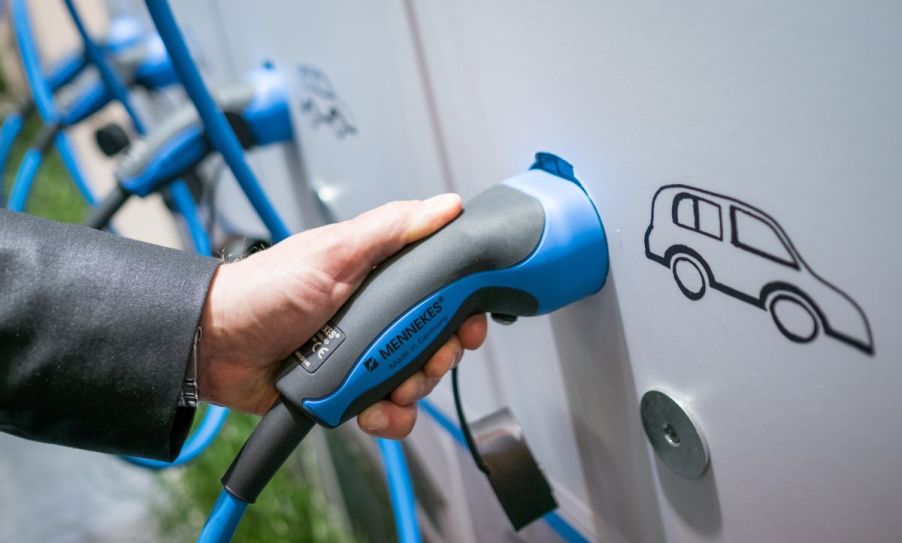
The Majority of Internal Combustion Engines Will Die in 15 Years With EV Shift
The writing is on the wall for many (not all) internal combustion engines. Let us take a real look at the industry and face that reality. Tesla has proven that an electric vehicle can be a viable source of reliable transportation. The company is also making headway at showing electric vehicles (EVs) can be made at a reasonable price. Other manufacturers, and indeed, even world governments, have taken notice. So, the world is scrambling to make, or encourage, a transition away from internal combustion engines and toward EV acceptance.
Regulations are forcing EV transition

Ten or 20 years ago, the comments above would have seemed preposterous. Yet, here we are today. Governments of major countries around the world are putting limitations and penalties in place for internal combustion engine (ICE) vehicles. At the same time, they are helping or rewarding citizens that convert to hybrid electric or fully electric vehicles. Here is the interesting thing. A lot of these new regulations are already being phased in, with full effect expected to be by 2030 or 2035. According to Forbes,
“Beginning in 2016, European countries and cities began to make commitments to ban the future sale of ICE vehicles. Countries like France, Norway, and the UK have all set dates for these bans, with Norway’s being the most bullish—all new car sales must be zero-emissions (battery EV or fuel cell) by 2025.”
ICE bans aren’t just for Europe
The thing is, these changes are not relegated just to Europe. It is happening in the United States too. According to the National Conference of State Legislatures,
“Transportation electrification has gained significant momentum in recent years, with policymakers playing a pivotal role in state efforts to transform the transportation sector. According to the U.S. Energy Information Administration, 91% of the energy consumed in U.S. transportation comes from petroleum. The transportation sector also is the leading source of greenhouse gas emissions (GHGs) in the U.S., accounting for 28% of the nation’s GHGs. Although motivations among state policymakers vary, many states are working to diversify the transportation sector fuel mix and drive down emissions by encouraging the use of alternative fuels, including electricity, natural gas, hydrogen and biofuels. To accomplish this, many states have implemented incentives to promote the adoption of electric vehicles (EVs), including plug-in hybrid vehicles (PHEVs) and battery electric vehicles (BEVs).”
In an online interview with Remove Before Race, Chris Harris, a presenter with Top Gear and a person very in tune with the automotive industry, commented that performance manufacturers have “10 years left to mildly hybridize or fully hybridize” and “we can’t rage against that. The tide is coming in.” But the same could be said for all automotive manufacturers. Or can it?
Reality is a special case
The reality is that it still takes an awful lot of money and energy to make batteries for EVs and the power grid to support the needed charging. So, going full electric with the currently available technology may not be feasible with the current power grid. However, a huge push to hybrid EVs may be a stop-gap measure until battery technology and the power grid advances enough. In that case, the ICE vehicles are still useful. Although, the smaller ICE would probably become par for the course when used in conjunction with the hybrid technology.
Still, it is very interesting to read Philippe Chain, former Chief Electric Vehicle Strategist at Renault, say,
“Consider that European CO2 regulations are virtually forcing original equipment manufacturers (OEMs) to offer these cars. Cost is going down, especially battery costs, which will soon make it an economically reasonable choice for more and more people to drive an electric car. Up to now infrastructure has been a barrier to adoption, and that also is now significantly lifting.
But I’d like to mention the fourth aspect, which is actual customer demand. In my opinion, this is oftentimes underrated or underestimated. Electric cars really offer a superior user experience, and you can see this in many customer satisfaction surveys. Anecdotally, I’ve heard many times that once you move to an electric vehicle, you never go back to an internal combustion. There are many reasons for that: silence, acceleration, smoothness, and, of course, the fact that they are environmentally friendly vehicles. In my mind, that will be the most powerful driver of adoption.
Once the barriers are lifted, which is happening now, the public will really enjoy and show enthusiasm for these cars. In the auto industry, that’s always the main driver: actual customer demand.”
EVs and ICE vehicles can coexist
Here is the truth. There will always be ICE vehicles. However, while battery EVs are making headway, there is still room for improvement. But, is there a shift happening towards electric or hybridized vehicles right now? Yes, that can not be denied. Will electric cars overtake the world in our lifetime? Probably not. I say that because there will always be people that like the visceral experience of having an ICE. Granted, they might have to pay more in annual taxes for the privilege of owning an ICE vehicle, but there will always be ICE vehicles around. Will many engines we are familiar with today go away? Yes. Will all of them go away? No. And, that is okay. I can appreciate electric and ICE vehicles for their intrinsic characteristic goodness. I would not turn away a Dodge Charger Hellcat, nor would I turn away a Tesla Model S, just like I still like manual transmission vehicles while I’m living in a world full of automatics. Both still coexist in my book of driving fun.


